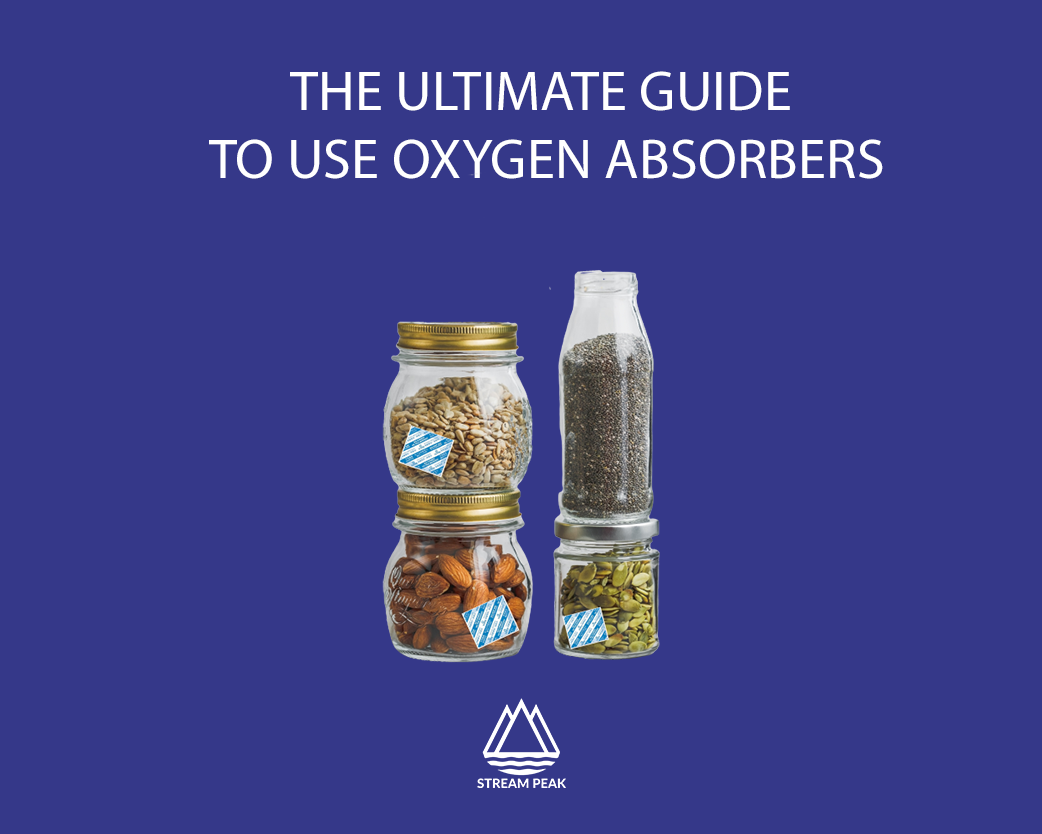
Guide to using Oxygen Absorbers
Food preservation can help decrease food wastage and prevent the spoilage of food products. The right food packaging solution can help increase shelf life, preventing food from being contaminated and losing its colour, flavour, texture and nutrition.
Oxygen absorbers are food packaging that can help extend food’s shelf life, and in this blog, we will share more about them.
What is an Oxygen Absorber?
Oxygen absorbers are often found inside food packaging or sometimes in a gummy vitamin jar. These small packets are known as oxygen scavengers and are used in various commercial food and pharmaceutical products to keep them healthy and fresh in storage.
Oxygen absorbers are also used to extend the shelf-life of pharmaceuticals and medical diagnostic kits.
The term “active packaging” refers to using oxygen absorbers in food packaging, indicating that the food is being preserved and extending its shelf life.
What are Oxygen Absorbers made of?
Oxygen absorbers are made from small amounts of iron powder and packaged in a porous sachet, allowing the packet to absorb oxygen from the atmosphere.
How does Oxygen Absorbers work?
When placed in a food container, an oxygen absorber removes oxygen from the microenvironment. When iron inside the oxygen absorber sachet comes into contact with oxygen and moisture, it oxidises (also known as rusts) and produces iron oxide.
During the formation process, iron oxide consumes the oxygen in the food container’s microenvironment and produces nitrogen.
By removing oxygen within the packaging, the oxygen absorber helps keep food from rotting, thus extending its shelf life. As a result, oxygen absorbers are ideal for food storage, especially from a prepper’s perspective.
Benefits of Oxygen Absorbers
This packaging solution plays a significant role in the food’s preservation. The following are some benefits of using oxygen absorbers:
- Maintains the aroma and flavour of roasted coffee
- Prevents the growth of pathogens and mould in several dairy products, including cheese
- Extends shelf-life of nuts and trail mixes
- Increases the spices’ and seasoned food’s shelf life
- Prevents and slows fruit and vegetable oxidation
- Minimises or eliminates the need for sorbates and other additives.
How many Oxygen Absorbers to use?
The sizes of oxygen absorbers will range from 20cc to 2000cc, and the size of an oxygen absorber indicates how much oxygen it can absorb. For example, a 200cc packet can absorb 200cc of oxygen, and a 20cc packet can absorb 20cc.
Generally, one 300cc packet should be used for every gallon of food stored. However, some foods are denser than others. For example, there will be less air inside a 1-gallon container of flour than in a 1-gallon container of beans.
Therefore, if used with less dense food products, it is recommended to use around 400cc oxygen absorber per gallon.
Where to store food?
Oxygen absorbers work best when housed in airtight packaging or a container. Suppose the container is not airtight, such as a Ziploc bag; the oxygen absorber will quickly absorb and reach its saturation point and has to be replaced with a new packet.
Steps to store food with Oxygen Absorbers
- Prepare containers and ensure that the containers are clean and dry.
- Get the food ready and fill the containers. Fill the containers as much as possible to reduce the air in them.
- Prepare a container for the oxygen absorbers. Having an airtight container is handy for storing any remaining oxygen absorber packets. The oxygen absorbers will start working as soon as the packaging is exposed. Seal the food container as soon as the oxygen absorber is placed inside.
- Food containers should be appropriately labelled and sealed. Mark it with the contents and the date so they can be referred later.
- Be careful to keep oxygen absorbers from being exposed to non-airtight environments for an extended period.

